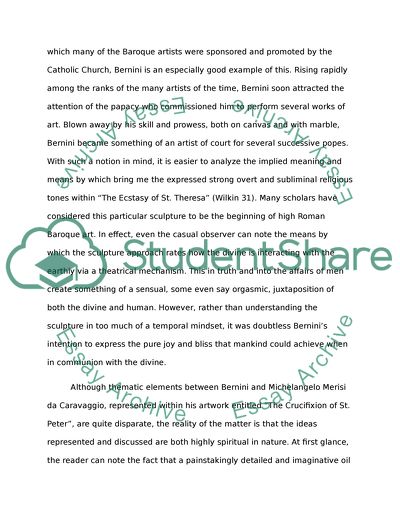Baroque Art Essay Example | Topics and Well Written Essays - 750 words. Retrieved from https://studentshare.org/visual-arts-film-studies/1480178-baroque-art
Baroque Art Essay Example | Topics and Well Written Essays - 750 Words. https://studentshare.org/visual-arts-film-studies/1480178-baroque-art.


